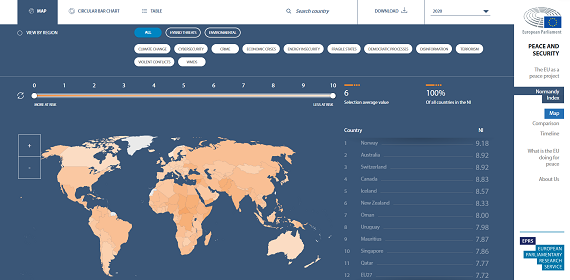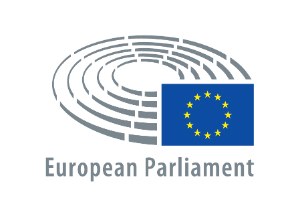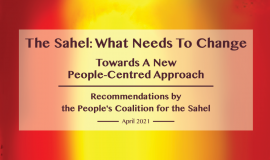
The Normandy index establishes a country ranking for the entire world. It correlates 11 dangers which threaten peace: climate change, cyber security, economic crises, energy dependence, fragile states, the murder rate, freedom of the press, terrorism, armed conflicts and weapons of mass destruction.
The results of the Normandy Index 2021 (on 2020 data) display new challenges:
"The past year has made clear the multiple consequences of protracted crises in our neighbourhood, but also new global challenges such as the Covid-19 pandemic and its economic and social consequences." David Maria Sassoli, President of the European Parliament
Among the most threatened nations are Syria, Central African Republic, Afghanistan, Yemen and South Sudan.
An interactive website for the Normandy Index
The European Parliament created an interactive map to understand the level of threats to peace for each country, with an option to select the threats: climate change, cyber security, economic crises, energy dependence, fragile states, the murder rate, freedom of the press, terrorism, armed conflicts and weapons of mass destruction.
On this website, a comparison tool is also proposed to weigh the results of several selected countries over the years. Moreover, a timeline is retracing the evolution of conflicts country by country according to data of the three studies of the Normandy Index.
Discover the interactive website




![[REPLAY] 2022 Forum: conference "Walls, obstacles to peace"](/sites/default/files/styles/270_160/public/2022-09/index3.jpg?itok=K1qkIk_q)





